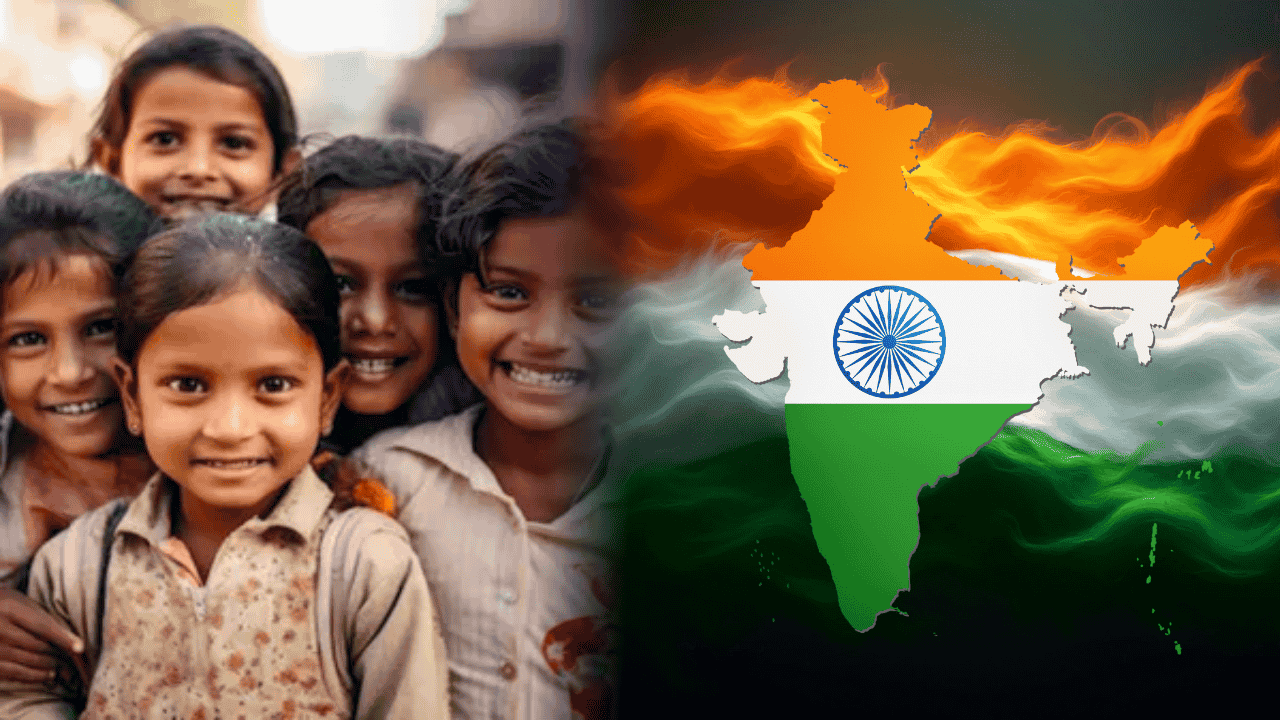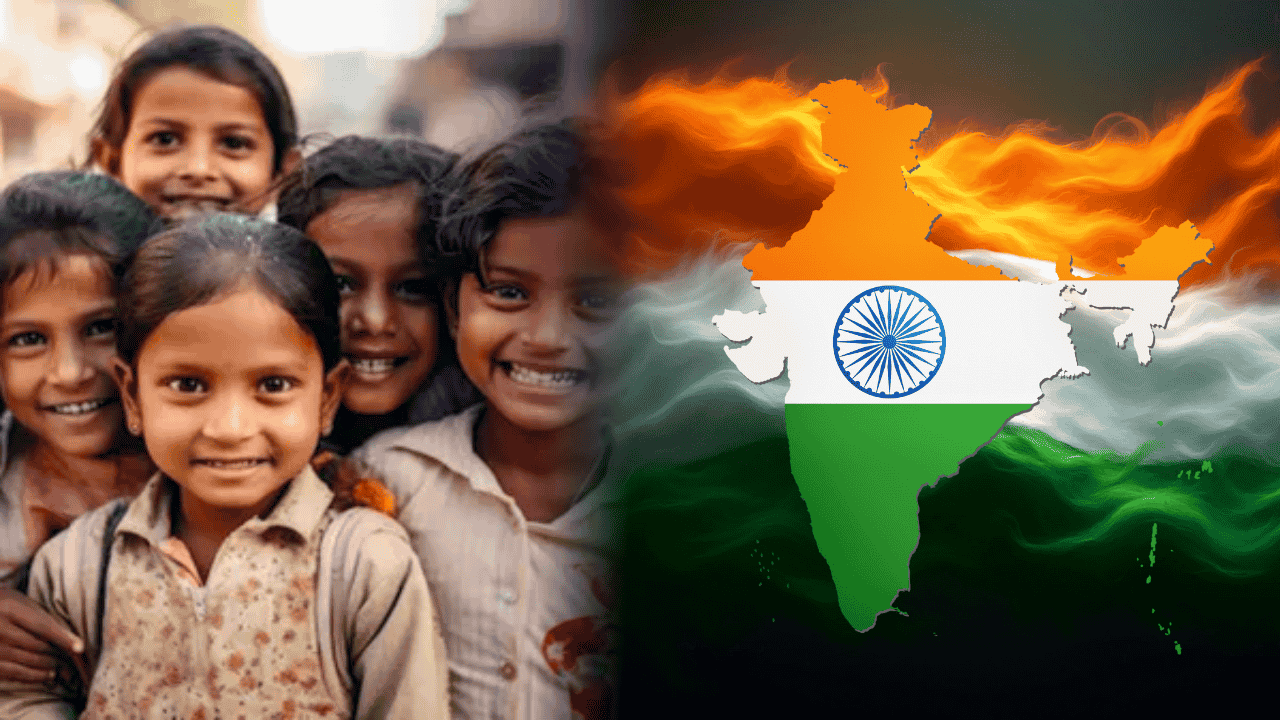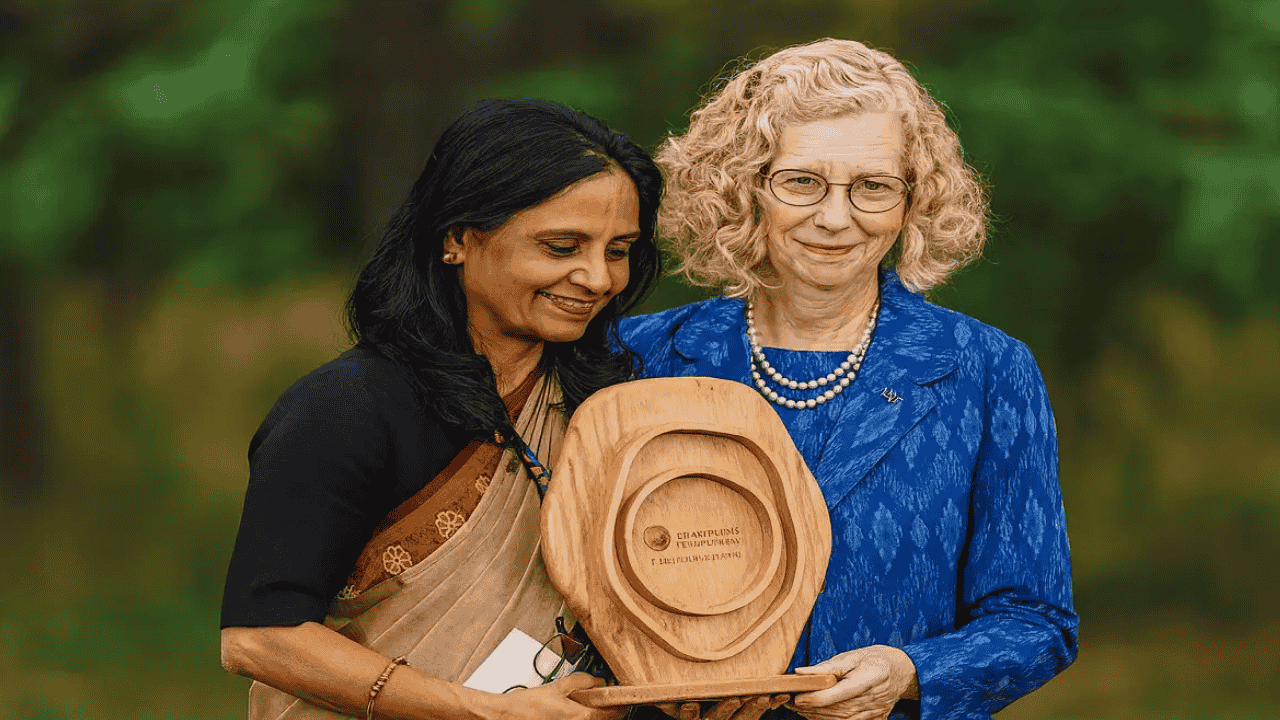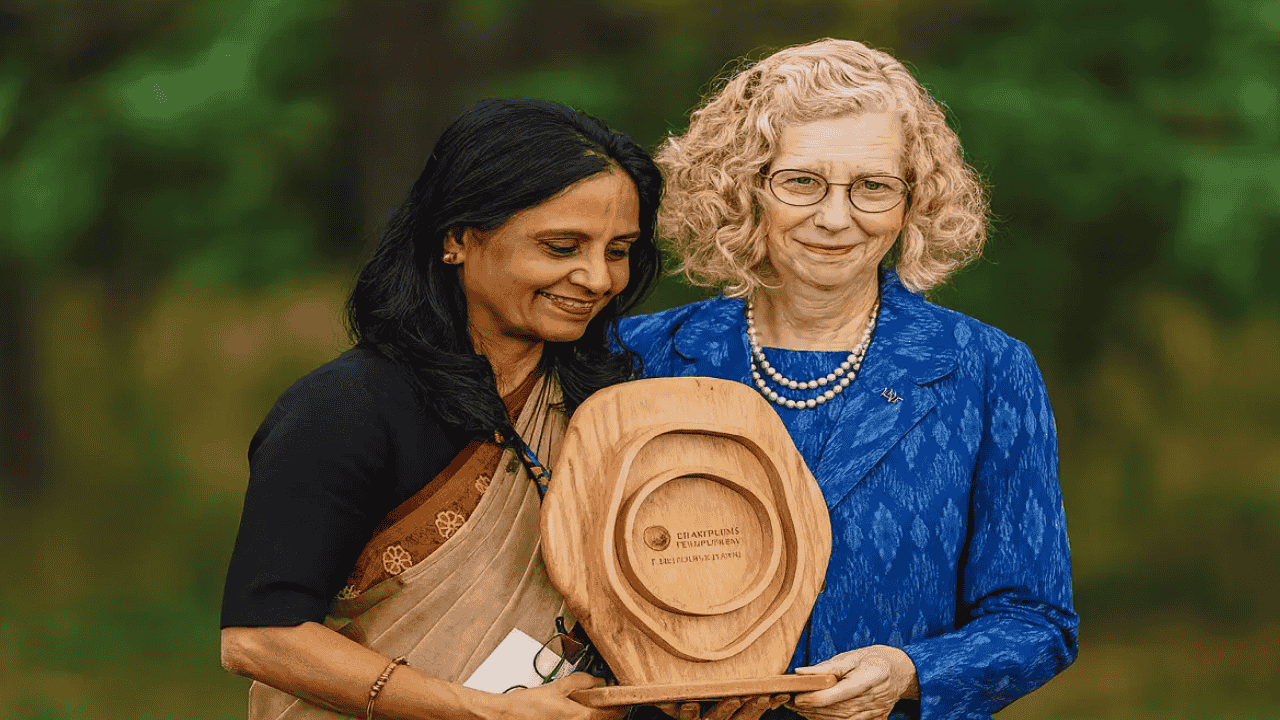The Demographic Shift That's Reshaping India's Future
India stands at a critical demographic crossroads. While the world celebrates India overtaking China as the most populous nation, a less-discussed transformation is quietly unfolding beneath the surface. According to recent reports based on the Ministry of Women and Child Development data and UNICEF projections, India's child population in the 0-19 age group is set to decline by approximately 32% from 2011 levels, reaching just 327 million by 2026. This represents a reduction of over 100 million children compared to the peak witnessed in 2001.
For UPSC and competitive exam aspirants, understanding this demographic transition is no longer optional—it's essential. This shift has far-reaching implications for India's economic planning, social policies, educational infrastructure, and even political representation.
Decoding the Numbers: What the Data Reveals
The Magnitude of Decline
The statistics paint a stark picture of India's changing demographic landscape:
Population Decline Across Age Groups:
The 0-4 year age group population declined from approximately 10.4% in 2011 to an estimated 7.9% in 2026
The 5-9 year age group fell from 10.4% to 8.2% during the same period
The 10-14 year cohort reduced from 10.1% to 8.2%
Overall, children aged 0-19 constituted 41% of India's population in 2011, projected to fall to just 32% by 2026
India's child population peaked at 365 million in 2001 and stood at 347 million in 2011. By 2026, this figure is expected to drop to approximately 327 million—a net decline of nearly 20 million children despite overall population growth.
The Fertility Rate Factor
The primary driver behind this decline is India's dramatically falling Total Fertility Rate (TFR). India's TFR has plummeted from 2.0 in the National Family Health Survey (2019-21) to 1.9 in 2025—now below the replacement level of 2.1 children per woman.
This represents a remarkable transformation from 1960, when Indian women averaged six children. States like Kerala (1.8), Tamil Nadu (1.8), Andhra Pradesh (1.7), and Karnataka (1.7) are leading this decline.
Understanding the Causes: Why Are Families Having Fewer Children?
Economic Pressures and Urbanization
The demographic transition in India is driven by multiple interconnected factors:
Rising Cost of Living: Urban middle-class families increasingly view children through an economic lens. Education costs, healthcare expenses, and lifestyle aspirations have made child-rearing financially demanding.
Women's Education and Employment: Enhanced female literacy rates and growing workforce participation have led women to delay marriage and childbearing. The correlation between female education and declining fertility is well-established globally and now evident across Indian states.
Urbanization: As of 2023, over 35% of India's population lives in urban areas. Urban fertility rates are significantly lower (1.6) compared to rural areas (2.1). Cities like Delhi, Mumbai, and Bengaluru witness couples delaying or even opting out of parenthood due to career pressures and work-life balance concerns.
Healthcare Improvements
Paradoxically, better healthcare contributes to lower birth rates. Under-five mortality rates have dropped from 240.1 per thousand in 1961 to just 65.6 in 2011. When parents are confident their children will survive, they choose to have fewer children and invest more in each child's development.
Social and Cultural Shifts
Traditional joint family systems are giving way to nuclear families. The preference for smaller families, delayed marriages (average marriage age for women has risen significantly), and widespread contraceptive use (Contraceptive Prevalence Rate increased from 54% to 67%) have collectively driven down birth rates.
Regional Variations: The Two Indias
India's demographic story is not uniform—it reveals a "high fertility and low fertility duality".
High Fertility States
Bihar, Uttar Pradesh, Jharkhand, Meghalujaya, and Manipur continue to have fertility rates above the national average:
Bihar: 2.98 children per woman
Meghalaya: 2.9
Uttar Pradesh: 2.35
Jharkhand: 2.26
These states face challenges including poor contraceptive access, limited healthcare infrastructure, entrenched gender norms, and lower female literacy rates.
Low Fertility States
Southern states and some western regions have achieved sustained below-replacement fertility:
Kerala achieved replacement-level fertility in 1988
Tamil Nadu reached this milestone in 1993
Urban areas in states like Maharashtra have fertility rates (1.35) comparable to developed nations like Germany
This regional divergence will have significant political implications. As population-based delimitation of parliamentary constituencies approaches in 2026, southern states fear losing political representation despite their developmental achievements.
Implications for India's Future: Opportunities and Challenges
The Demographic Dividend Window
India's demographic dividend—the period when the working-age population exceeds dependents—is expected to peak around 2041 when approximately 59% of the population will be in the working age group (20-59 years).
Currently, over 65% of India's population is under 35 years of age, with a median age of just 28 years—compared to 38 in China and 48 in Japan. This youthful workforce presents unprecedented economic opportunities if properly harnessed.
Economic Growth Potential
A favorable dependency ratio means:
Higher savings and investment rates as more people earn than depend
Increased consumer spending driving economic growth
Enhanced productivity with a larger, younger workforce
Innovation and entrepreneurship fueled by youthful energy
India's working-age population stood at over 900 million in 2021 and is expected to reach 1 billion over the next decade.
The Employment Challenge
The demographic dividend comes with a caveat: India must create approximately 12 million jobs annually to absorb new entrants into the labor market. Current challenges include:
Youth unemployment rate of 10.2% (2023-24)
Approximately 54% of graduates deemed "unemployable" due to skill mismatches
Declining female labor force participation, though improving from 19.7% in 2011 to 37% in 2023
Dominance of informal employment (~90% of jobs)
Without adequate job creation, the demographic dividend risks becoming a demographic disaster.
Education and Skill Development
India faces a quality crisis in education:
Mean years of schooling increased from 2.2 years (1980) to 6.4 years (2020)
However, quality remains questionable with many graduates lacking job-ready skills
School enrollment has hit a seven-year low at 24.68 crore in 2024-25, declining by 11 lakh students year-on-year
Primary school enrollment (Classes 1-5) shrank by 34 lakh students
Government initiatives like Pradhan Mantri Kaushal Vikas Yojana (PMKVY) aim to bridge skill gaps, but implementation challenges persist.
The Looming Ageing Crisis
While celebrating the youthful population, India must prepare for rapid ageing:
The elderly population (60+ years) will more than double from 100 million in 2011 to 230 million by 2036
By 2050, India will have 347 million elderly citizens—nearly 21% of the population
This represents adding nearly 200 million elderly people in just 25 years
Southern states will age faster: Kerala's elderly population will surge from 13% (2011) to 23% by 2036
This transition will strain:
Healthcare infrastructure (currently only 2-2.5% of GDP spent on health)
Pension systems and social security
Elder care services in a society where traditional joint family support is eroding
Policy Implications: What Governments Must Address
Educational Infrastructure Optimization
With declining child populations, particularly in southern states, there's an opportunity to improve student-teacher ratios and infrastructure quality rather than just expanding quantity.
States must:
Consolidate schools where enrollment is declining
Invest in quality improvements—better-trained teachers, modern pedagogy, digital infrastructure
Focus on vocational and skill-based education aligned with market needs
Healthcare Reorientation
The focus must shift from maternal and child health (MCH) services to a life-cycle approach that includes:
Adolescent health and reproductive counseling
Geriatric care infrastructure
Non-communicable disease management (diabetes, hypertension affecting elderly)
Mental health services
Social Security Reforms
India needs comprehensive social security reforms:
Universal pension schemes, especially for the economically vulnerable elderly
Long-term care insurance models
Community-based elder care facilities
Digital literacy and financial inclusion for seniors
Political Representation
The upcoming 2026 delimitation of parliamentary constituencies based on projected population will be politically sensitive. Southern states with lower fertility may lose seats to high-fertility northern states, creating potential tensions.
Policymakers must balance democratic representation with rewarding states that achieved demographic transition through development, not coercion.
Gender Equality
Despite overall fertility decline, gender bias in child populations persists. The child sex ratio stands at 931 girls per 1,000 boys (NFHS-5). Some states show alarming trends where prosperity and declining fertility are paradoxically associated with worsening gender bias.
Strict enforcement of the Pre-Conception and Pre-Natal Diagnostic Techniques Act and changing social attitudes remain priorities.
UPSC Relevance: How This Topic Appears in Exams
GS Paper I (Geography and Society)
This topic directly relates to:
Population and associated issues (distribution, density, growth trends)
Demographic transition theory and India's progression through stages
Regional variations in demographic indicators
Gender dimensions of development
Previous Year Questions:
"How do you explain the statistics that show that the sex ratio in Tribes in India is more favourable to women than the sex ratio among Scheduled Castes?" (UPSC Mains 2015)
"Why do some of the most prosperous regions of India have an adverse sex ratio for women?" (UPSC Mains 2014)
GS Paper II (Governance and Social Justice)
Relevant areas include:
Government policies and interventions for vulnerable sections
Social sector/services relating to Health, Education
Issues relating to development and management of Social Sector/Services
Welfare schemes for vulnerable sections
GS Paper III (Economy)
Coverage includes:
Inclusive growth and issues arising from it
Employment generation
Skill development initiatives
Demographic dividend and its economic implications
Current Affairs Integration
Stay updated on:
UNICEF State of the World's Children reports
UNFPA State of World Population reports
National Family Health Survey (NFHS) data releases
Economic Survey chapters on demographic trends
Census 2026-27 preparations and data releases
Preparing for the Future: Strategic Recommendations
For Government and Policymakers
Invest in Quality Education: Focus on outcome-based learning, critical thinking, and job-ready skills
Accelerate Job Creation: Encourage manufacturing, startup ecosystem, and service sector growth
Enhance Female Workforce Participation: Provide safe work environments, childcare support, flexible working arrangements
Build Robust Social Security: Universal old-age pensions, healthcare for elderly, community care models
Address Regional Imbalances: Targeted interventions in high-fertility states to accelerate demographic transition
For Society
Change Mindsets: Value elderly as contributors, not burdens
Gender Equality: Eliminate son preference, ensure equal opportunities for girls
Intergenerational Solidarity: Foster community-based support systems
Embrace Technology: Use digital health, telemedicine, assistive technologies for elderly care
For Aspirants
Integrate Demographic Data: Link population trends with economic policies, social schemes, political developments
Regional Comparative Analysis: Understand why Kerala differs from Bihar in demographic indicators
Multidimensional Understanding: Connect demography with health, education, gender, economy, polity
Current Affairs Linkage: Track latest reports, government initiatives, parliamentary debates on population policies
Key Takeaways for UPSC Aspirants
India's declining child population represents a fundamental demographic transition with cascading implications across all aspects of national life. Understanding this shift is crucial for competitive exam preparation for several reasons:
It's Multidisciplinary: This topic cuts across Geography, Polity, Economy, Social Issues, making it ideal for integrated GS answers
It's Current and Relevant: With Census 2026-27 approaching and ongoing policy debates, expect questions on demographic trends
It Demands Analytical Thinking: The topic requires understanding causes, consequences, regional variations, and policy responses—perfect for demonstrating analytical depth in Mains answers
It Has Real-World Implications: From educational infrastructure planning to pension reforms, from political representation to economic growth strategies, this demographic shift will shape India's 21st-century journey
It's Evergreen Yet Dynamic: While the demographic transition is a long-term process, new data, reports, and policies keep the topic fresh for Prelims Current Affairs and Mains GS papers
The narrative of India's demography is shifting from "population explosion" concerns to "population optimization" strategies. For the first time in independent India's history, the focus is not on controlling births but on maximizing the potential of each child while preparing for an ageing society.
This transition offers India an unprecedented window of opportunity—a demographic dividend that could last until 2055. However, this dividend is not automatic; it must be earned through strategic investments in education, health, skills, and job creation.
As future administrators, policymakers, and civil servants, UPSC aspirants must deeply understand these demographic dynamics. The generation that manages this transition wisely will determine whether India realizes its aspiration of becoming a developed nation by 2047 or squanders its demographic advantage.
The choice before India is clear: harness the power of its young population through education, employment, and empowerment, while simultaneously building systems to care for an ageing society—or risk turning the demographic dividend into a demographic disaster.
Why This Blog Matters for Your Exam Strategy
Static-Current Integration: This topic allows you to integrate static concepts (demographic transition theory, population geography) with current developments (latest UNICEF reports, fertility rate data, government schemes)
Answer Enrichment: Use specific statistics, regional comparisons, and international examples to add depth to answers on population, development, social issues
Essay Potential: Topics like "Demographic Dividend: Opportunity or Challenge?", "Ageing India: Preparing for Tomorrow", "Population Dynamics and Sustainable Development" are likely essay themes
Interview Relevance: Panel members often ask about population policies, demographic trends, especially from candidates with social science backgrounds
Holistic Understanding: This topic demonstrates how a single demographic trend connects health policies, education planning, economic strategies, political representation, social welfare, and international relations
Master this topic, and you'll have a powerful tool to craft comprehensive, insightful answers that stand out in the UPSC examination.
For more such in-depth current affairs analysis and UPSC-focused content, visit www.atharvaexamwise.com and subscribe to our YouTube channel for daily updates.







